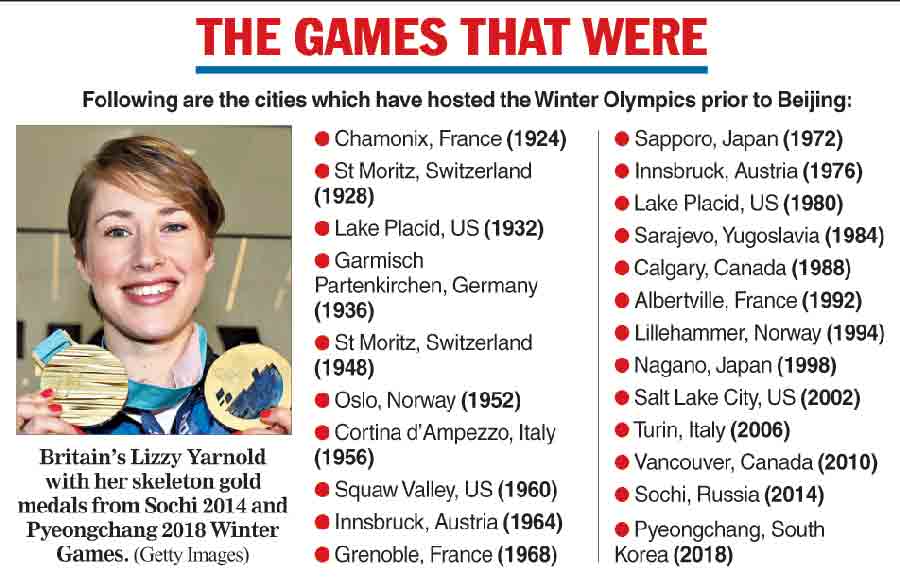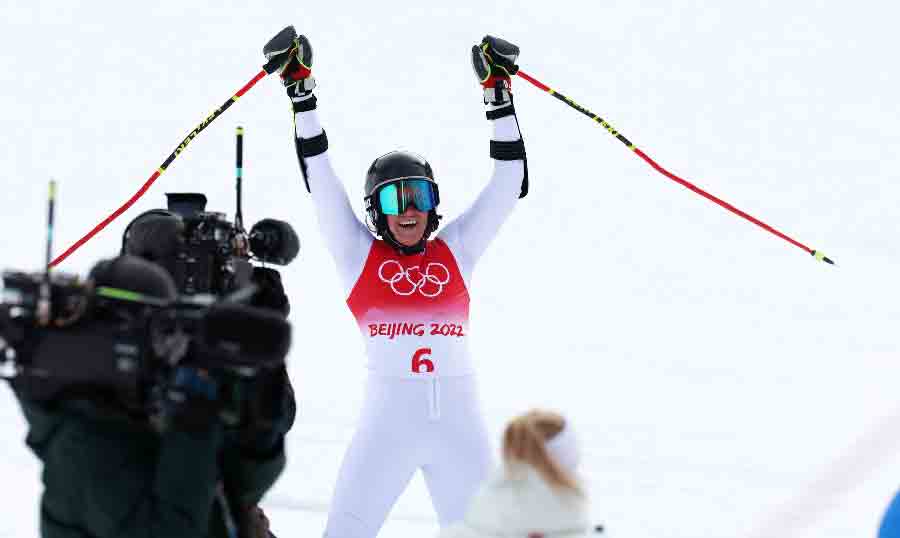The ongoing Beijing Winter Olympics is literally facing the ‘heat’ of climate changes and is the first Winter Games being played virtually on hundred per cent artificial snow as increased spells of warming are causing the natural snow to melt, said a recent international report.
The report, Slippery Slopes: How Climate Change is threatening the 2022 Winter Olympics, prepared by the Sports Ecology Group at Loughborough University and ‘Protect Our Winters’, claims that climate change is also casting a shadow on the future of global snow sports as the playing conditions are gradually turning hostile to athletes.
“Over 100 snow generators and 300 snowmaking guns are working flat out to cover the ski slopes of the 2022 Winter Olympics in artificial snow ahead of the Games opening on February 4,” states the report that was published just before the Games began.
“The risk is clear: man-made warming is threatening the long-term future of winter sports… It is also reducing the number of climatically suitable host venues for the Winter Olympiad” reads the report.
Of the 21 venues used for the Winter Games since the first Olympics in Chamonix, France, in 1924, scientists feel that by 2050 only 10 will survive and have the ‘climate suitability’ and natural snowfall levels to host an event.

The report warns that if global greenhouse gas emissions remain on the current trajectory, only one out of the 21 Winter Olympics cities will be cold enough by the end of the century while the number will rise to nine if emissions can be curtailed in line with the Paris agreement inked in 2015 which mandated that global average temperatures must not rise over 2 degree Celsius compared to pre-industrial period.
Chamonix is now rated ‘high risk’ while most European venues, including Grenoble in France, Austria’s Innsbruck and Italian resorts in Cortina d’Ampezzo and Turin are sure to reach unreliability within this century, irrespective of what happens on the climate front.
“I have seen huge changes in the snowpack in ski resorts over the winters… and the changes are hugely concerning on many levels,” stated Lesley McKenna, an athlete who participated in three Olympics from 2002 to 2010.
The report further complains that the first winter Olympics on virtually hundred per cent artificial snow is not only turning the Games “energy and water intensive … but also delivers a surface that many competitors say is unpredictable and potentially dangerous” as chemicals are being frequently used to prevent the ice from melting.
Various athletes have expressed strong reservations about the Winter Olympics being organised on artificial snow, as elaborated in the report.
Scottish freestyle skier Laura Donaldson warns that “This is dangerous for athletes, some have died,” while two-time Canadian Olympian and leading freestyle skier Philippe Marquis expressed reservations about “scary changes in the basic structure of ice formation and the landscape of glaciers” while others sounded a stark warning regarding the safety of the athletes.
“I have never played on artificial ice and always played on natural ice in Gulmarg and found it extremely convenient … I feel natural snow should be much better for winter sports” Muskaan Nabi, a national level curling player from Kashmir, told The Telegraph.










